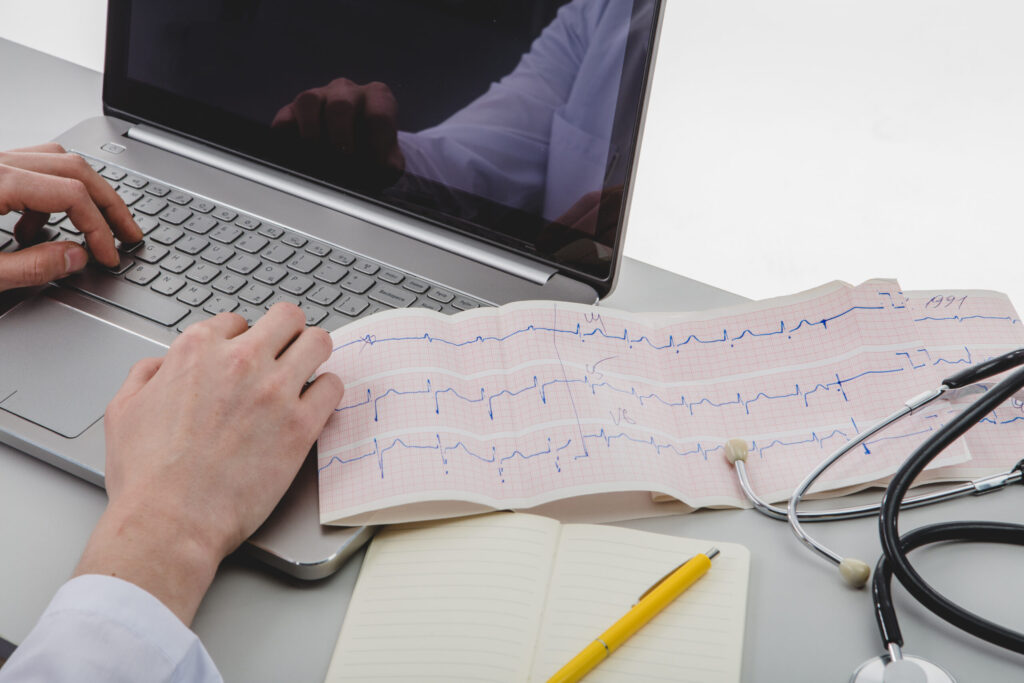The 24-hour electrocardiogram (ECG) is an important diagnostic test that continuously records the electrical activity of your heart over a 24-hour period. Three or four electrodes are attached to your chest for this purpose. In addition, you wear a small recording device either on your belt or it is hung around your neck. Normally, you can go about your everyday life.
The importance of the 24-hour ECG
The 24-hour electrocardiogram is a non-invasive diagnostic test that provides a continuous recording of your heart activity over a 24-hour period. This method offers doctors the opportunity to identify cardiac arrhythmias and other cardiac problems that may not be detectable on a conventional ECG.
During a long-term ECG, you wear a small, portable device that is connected to electrodes that are attached to specific points on your chest. These electrodes record the heart’s electrical signals and send them to the device, which stores the data. You perform all activities during the 24 hours of a normal daily life, including sleep, work and physical exertion.
Why is a long-term ECG useful?
The main purpose of a 24-hour ECG is to detect cardiac arrhythmias such as atrial fibrillation, ventricular tachycardia or irregular heartbeats, which can lead to symptoms such as dizziness, chest pain or fainting. In addition, such an ECG can also be used to check the effectiveness of certain medications to control cardiac arrhythmias or to determine whether unexplained symptoms are associated with abnormal heart activity.
The recorded data is evaluated by cardiologists or internists who analyze the heart rhythm patterns and identify irregularities. This information is crucial for making the correct diagnosis and developing a treatment plan for the patient.
Overall, the 24-hour electrocardiogram offers an important complement to other diagnostic tests such as the standard ECG and exercise ECG. By continuously monitoring cardiac activity over an extended period of time, doctors can get a more comprehensive picture of a patient’s heart health, allowing for more precise and personalized treatment.













